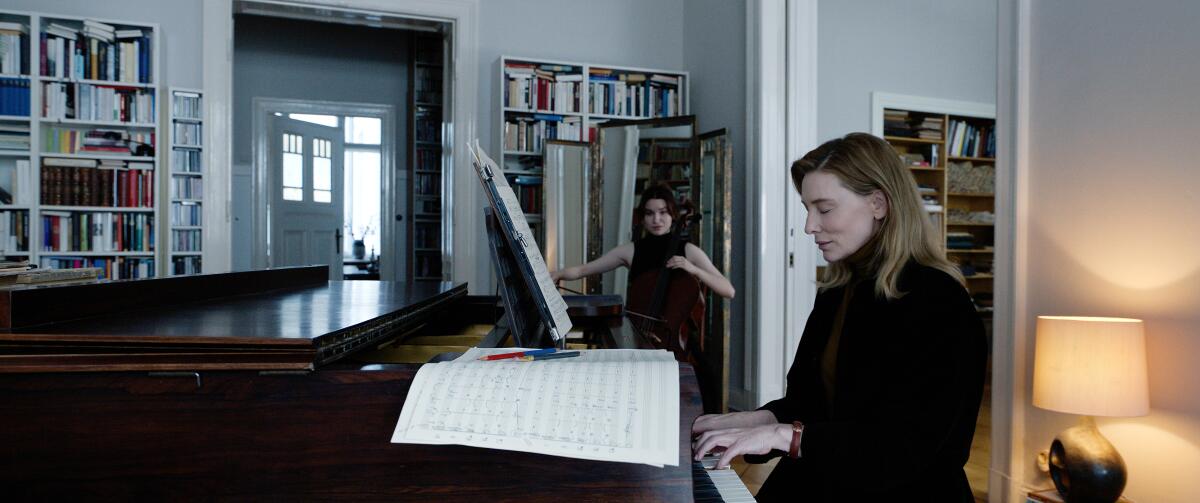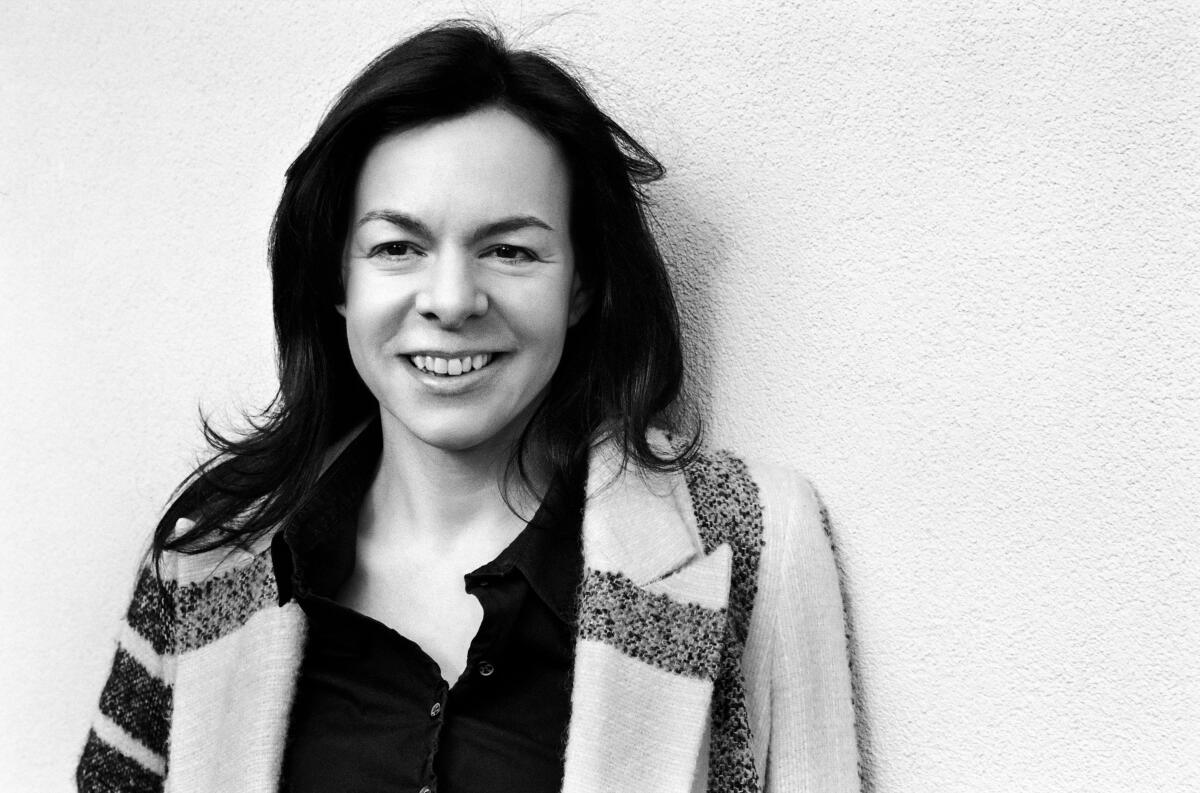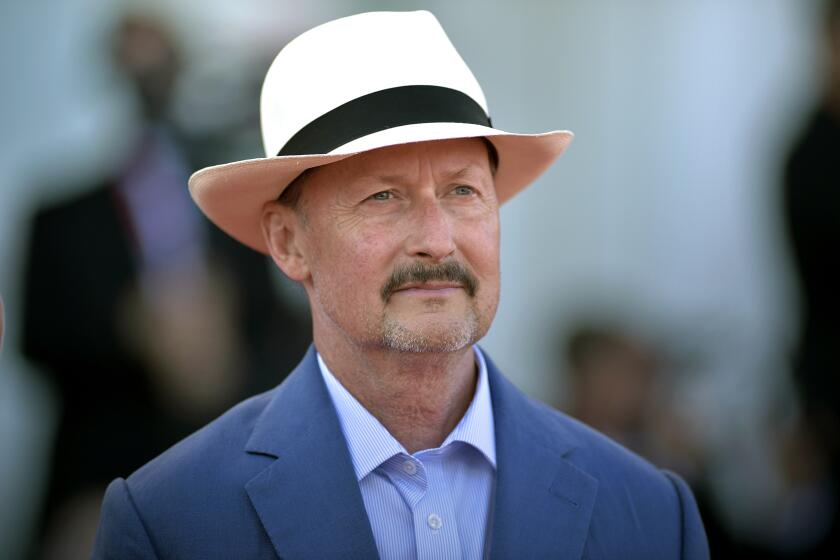It wasn’t the limited edits that made ‘Tár’ a joy. It was choosing ‘the best of the best’

- Share via
After viewing the work of film editor Monika Willi on Michael Haneke’s classic films, “Amour,” “The White Ribbon,” “The Piano Teacher” and “Funny Games,” writer-director Todd Field approached her in 2011 about a project he had in mind titled “The White Tiger,” based on the 2008 Booker Prize-winning novel by Aravind Adiga. That project wound up in arbitration between producing partners and was never realized.
But Field didn’t let the idea of working with Willi go.
“We didn’t have a lot of communication, but, yeah, he came back to me for ‘Tár,’” she says of Field, who hadn’t made a movie in 16 years. “Two reasons, I think loving the work I did on the Michael Haneke films and I was speaking German, which was a big reason for this movie,” she says from her home in Austria.
Field worked closely with Willi, sitting with her most days rather than just viewing the work and providing notes. Edits are sparse in the movie, which opens with Tár, an orchestra conductor played by Cate Blanchett, being interviewed by New Yorker journalist Adam Gopnik. Coverage, including a master from the back of the auditorium as well as singles on each performer, is intercut with shots of a tailor designing and fitting her tuxedo to be worn on the podium later in the film, which has earned six Oscar nominations, including one for Willi. It’s a smart piece of filmmaking combining biographical and sartorial achievements to create a divinely superficial portrait of its subject.
How Todd Field spent hours and hours studying classical music and orchestras before writing his Oscar-nominated screenplay.
Willi’s economic edits follow a rhythm dictated by the cast. “The performance is the guideline,” she says, noting that fewer edits don’t necessarily make for easier work. “You have to watch it and know when you go in and you get out. It’s different work with action movies, which are driven by multiple camera angles and other concerns. Todd and the cinematographer, Florian Hoffmeister, knew exactly what they wanted, and it was all very, very prepared. So, we had to choose from the best of the best.”
Edits ramp up during rehearsal sequences when we see reaction shots among orchestra members, and especially when it comes time to choose the companion piece to Mahler’s Symphony No. 5, the recording of which is central to the film. After catching a glimpse of a candidate for the cello section, Tár hopes to get close to her by selecting Elgar’s Cello Concerto in E minor, Op. 85, then elevating the new candidate above the existing lead cellist. Willi’s edits generate the subtext of the scene — the lead cellist realizing she’ll be passed over; the new cellist celebrating inside; Tár’s partner, portrayed by Nina Hoss, fulminating as she realizes she has a romantic rival.
“It was not difficult, because it was all set in the shoot,” Willi says. “I was there at the shoot to see if everything was there, if they missed something. But, yeah, of course it is hard to choose which moments and which reactions, poring through all of the outtakes.”

If a set piece exists in the movie, it’s a protracted scene in which Tár leads a conducting class at Juilliard. Running roughly 15 minutes without edits, it’s a tour de force for Blanchett as she bullies a student who rejects Bach based on his sexual proclivities. In it, she even manages to play variations on the composer’s “Well Tempered Clavier,” including one in the style of Glenn Gould.
“I was present during the shoot because Todd wanted me there. In case it wouldn’t work, he wanted to have backup and talk to me about it,” Willi recalls. “But it worked out as a oner, because it was clear from the beginning that it is a oner.”
Later, the scene is recut as a hatchet job on social media that leads to Tár’s downfall. “They shot the scene with a lot of mobile phones. And I was there on set because it was the Juilliard scene, and, yeah, of course it has a different meaning to cut something, which was shot by mobile phones, and meaning to make someone not look so good. I played a lot with it.”
As a young person in Vienna, Willi had planned on attending Filmakademie Wien but couldn’t find a break in her busy schedule editing documentaries. When she finally got the chance to work on Haneke’s “The Piano Teacher,” which was nominated for the Palme d’Or and won the Grand Jury Prize at Cannes in 2001, returning to film school seemed pointless. She continued on with Haneke’s award-winning films.
Now an industry veteran, she’s been to Los Angeles before, just never under such notable circumstances as the Oscars ceremony. “It’s completely overwhelming, and I’m not prepared,” she says. “I would lie if I say it’s not a dream. But it’s absolutely overwhelming,” she adds with a smile.
More to Read
From the Oscars to the Emmys.
Get the Envelope newsletter for exclusive awards season coverage, behind-the-scenes stories from the Envelope podcast and columnist Glenn Whipp’s must-read analysis.
You may occasionally receive promotional content from the Los Angeles Times.











